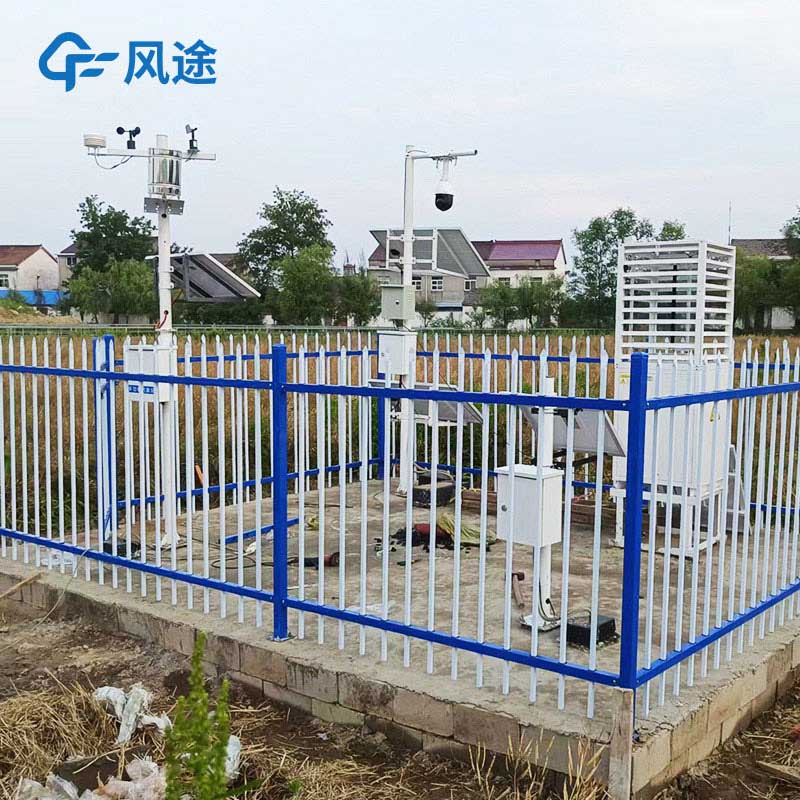Shandong Fengtu IOT Technology Co., Ltd
Sales Manager:Ms. Emily Wang
Cel,Whatsapp,Wechat:+86 15898932201
Email:info@fengtutec.com
Add:No. 155 Optoelectronic Industry Accelerator, Gaoxin District, Weifang, Shandong, China

Sales Manager:Ms. Emily Wang
Cel,Whatsapp,Wechat:+86 15898932201
Email:info@fengtutec.com
Add:No. 155 Optoelectronic Industry Accelerator, Gaoxin District, Weifang, Shandong, China
time:2024-12-12 09:23:45 source:Weather Station viewed:288 time
Large-field agriculture is a production method that involves crop cultivation on large areas of farmland, mainly including the large-scale planting of food crops, oil crops and cash crops. For example, a large area of the Northeast Plain in China is planted with corn, soybeans and so on. Its production relies on natural conditions and large-scale agricultural technology inputs, and has relatively high production efficiency.
It is very necessary to monitor the "four conditions" in large-field agriculture, namely seedling condition, soil moisture condition, pest condition and disaster condition. Seedling condition covers the density, height, number of leaves and color of crop seedlings. For example, the seedling condition of wheat can reflect whether its tillering and growth are robust, so as to facilitate precise fertilization and other field management. Soil moisture condition is related to soil humidity and is a key factor for crop growth. For instance, when corn grows, appropriate soil moisture condition is needed to ensure the water absorption by roots. Pest condition involves the types, numbers and distribution of pests in farmland. For example, the monitoring of the bollworm pest condition in cotton fields is of great significance for the yield and quality of cotton. Disaster condition includes the damage to crops caused by meteorological disasters (such as drought, flood, hail, etc.) and other natural disasters (such as large-scale outbreaks of pests and diseases, fires, etc.).
The Agricultural Four Conditions Monitoring System can monitor and supervise different agricultural production environments and objects. It uses sensing devices to detect physical parameters such as soil, pest conditions, meteorology, seedling conditions and spores, realizes real-time dynamic monitoring and makes it conform to the production environment standards, effectively improves the quality of agricultural products, accurately matches the market supply and demand, and promotes the refined, efficient and modern development of agriculture.
The system consists of tubular soil moisture monitors, pest forecast lamps, meteorological stations, video surveillance, fences, wind-suction insecticidal lamps, spore capture devices, cloud platforms and so on. It can conduct systematic monitoring and management of soil temperature and moisture in agricultural large fields, types and numbers of pests and diseases, climatic parameters, crop growth and the number of spores, and upload data to the forecast platform via GPRS/4G or network ports. Managers can remotely view data and trends and make adjustments accordingly to ensure the growth of crops.
The Agricultural Four Conditions Forecast Platform is an online monitoring platform integrating multiple monitoring functions. The pest condition monitoring has functions such as AI automatic pest identification; the meteorological monitoring allows for remote real-time viewing and analysis of historical data; the soil moisture condition monitoring can remotely obtain and analyze historical soil moisture data; the seedling condition monitoring enables real-time viewing of crop growth; the automatic spore capture device uses advanced technology to automatically take pictures of pathogen spores and upload them. The monitoring home page displays information on equipment, large-screen visualization and various monitoring icons as well as the operating status of equipment. The pest condition monitoring includes sections such as real-time pest conditions, analysis and statistics, and both the meteorological and soil moisture condition monitoring have sections for real-time and historical data. System management covers equipment, user, area and log management, etc., helping with intelligent agricultural management and decision-making in all aspects.

The YD1 Raindrop Sensor is an intelligent sensor that integrates precipitation particle spectrum monitoring and weather phenomenon identification. By actively emitting an infrared light band, the instrument can capture in real-time the changes in light energy when precipitation particles pass throug...
Traditional cup anemometers are widely used in the field of wind power measurement, but they have obvious limitations. It can only measure the synthetic wind speed in the horizontal plane at the installation height of the wind measuring tower, and based on this, it can complete the statistical calcu...
Fengtu offers a wide variety of Weather Instruments.Among the Handheld Weather Stations, the FT - SQ2A Ultrasonic Two - element Handheld Weather Station stands out. It uses the principle of ultrasonic propagation time difference to accurately measure wind speed and direction. It comes with a built -...
What are the negative oxygen ion monitoring equipment? What is the role? In daily life, we often hear terms such as "negative oxygen ions". So what are these? Let's find out below!...